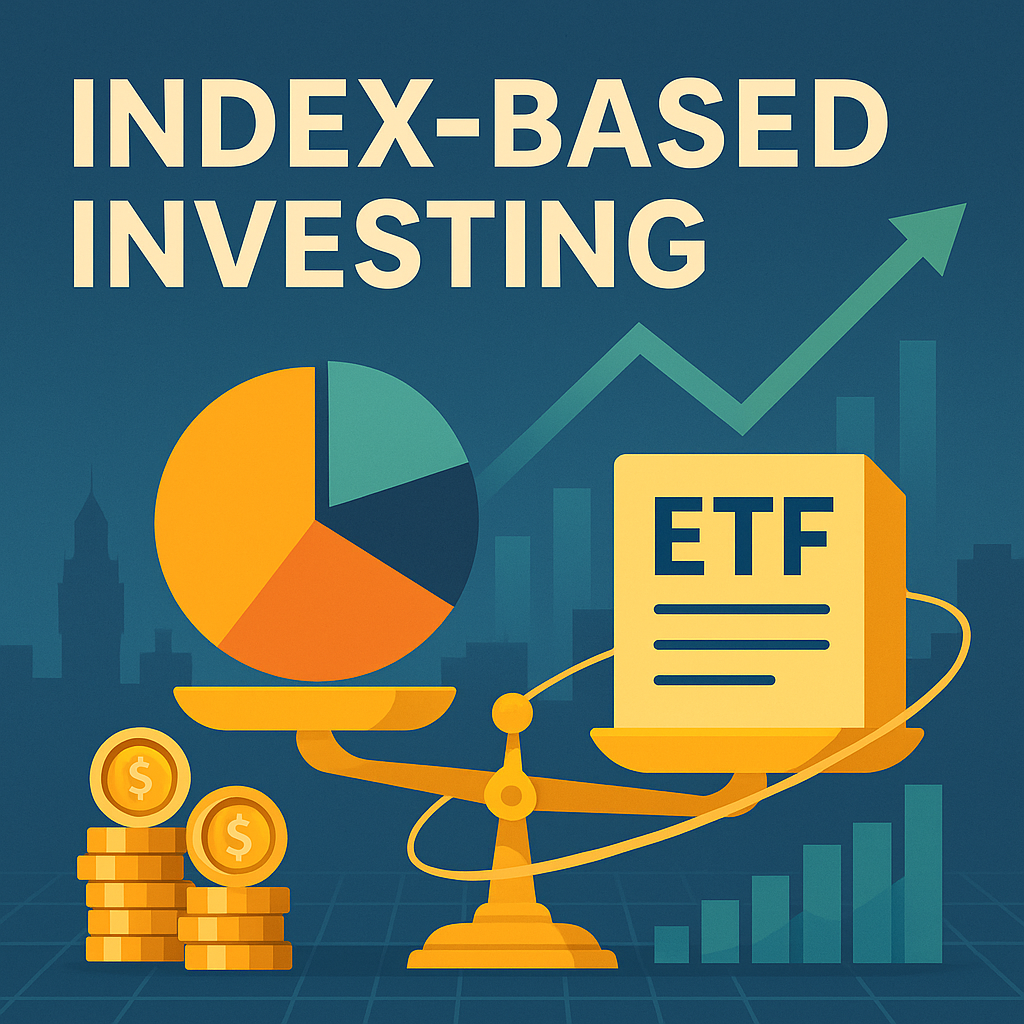A strategy that buys and holds a basket of securities designed to replicate a market index—thereby matching, rather than beating, the benchmark’s performance.

1. The Core Idea
Instead of selecting individual “winners,” index investors purchase every constituent in a target index, either directly or via an exchange‑traded fund (ETF) or mutual fund. Consequently, portfolio returns rise and fall in lock‑step with the chosen benchmark.
2. How the Process Works
- Choose a Benchmark
First, investors decide which market segment they wish to capture: for example, the S&P 500 for U.S. large caps, MSCI World for developed equities, or Bloomberg Global Aggregate for bonds. - Select a Tracking Vehicle
Next, they pick an index fund or ETF. Because these vehicles follow the benchmark’s weighting rules—often market‑cap weighting—the tracking error typically remains below 0.10 % per year. - Automatic Rebalancing
Moreover, the fund provider handles all index changes: adding new entrants, deleting ineligible names, and reweighting positions. Investors therefore avoid manual adjustments and trading costs. - Low‑Cost Structure
Finally, because the strategy is rules‑based rather than research‑intensive, expense ratios stay minimal—frequently under 10 basis points. Lower fees, in turn, boost net returns over time.
3. Benefits
- Diversification by Design – Buying the whole index spreads risk across hundreds or even thousands of securities.
- Consistent Market Exposure – Performance closely mirrors the benchmark; thus, surprises—from stock selection—are rare.
- Cost Efficiency – Low fees and reduced turnover mean investors keep more of their gains.
- Transparency – Constituents and weights are published daily, allowing clear visibility into holdings.
4. Trade‑Offs to Consider
| Advantage | Offset |
|---|---|
| Matches the market | Never beats it after costs |
| Minimal research needed | Still demands discipline during downturns |
| Broad exposure | Some sectors may be over‑ or under‑weighted vs. investor goals |
5. Implementation Tips
- Align Benchmark to Goal – Global growth? Use MSCI ACWI. Dividend income? Opt for a high‑yield equity index.
- Mind Tracking Difference – Even passive funds vary slightly; compare long‑term tracking records.
- Watch Trading Spreads – ETFs with high average volume generally trade closer to net asset value.
- Stay the Course – Because the market oscillates, rebalancing only as needed preserves tax efficiency.
6. Common Myths—Debunked
- Passive Means Lazy – In reality, index managers actively manage cash flows, corporate actions and securities lending.
- Indexes Form Bubbles – Weight caps and float adjustments temper single‑stock dominance.
- Active Always Outperforms in Down Markets – On average, most active funds still lag indexes after fees, even during corrections.
Key Takeaways
Index‑based investing works by owning the market rather than outguessing it. Through automated, low‑cost vehicles, investors achieve instant diversification, reliable benchmark tracking and transparent exposure—all while freeing time and resources to focus on holistic financial planning instead of constant stock picking.